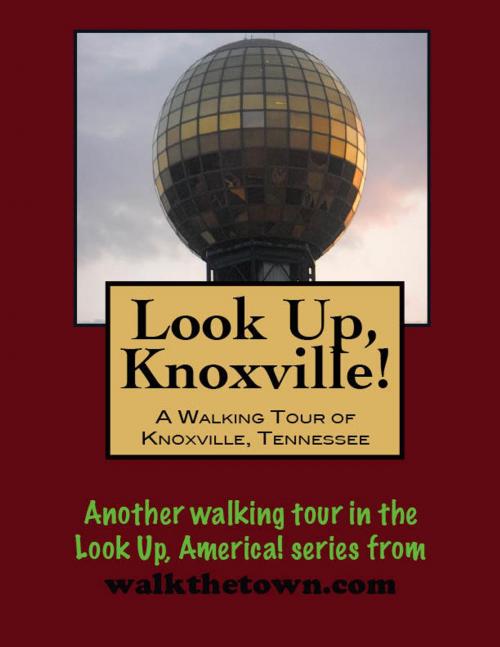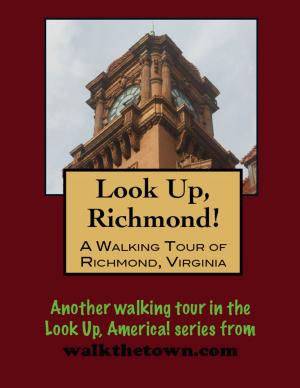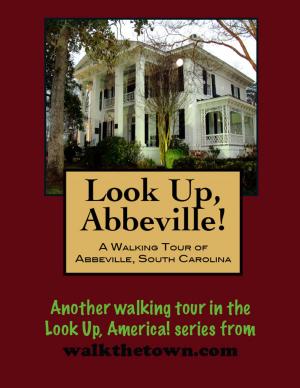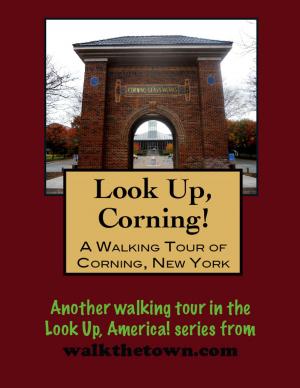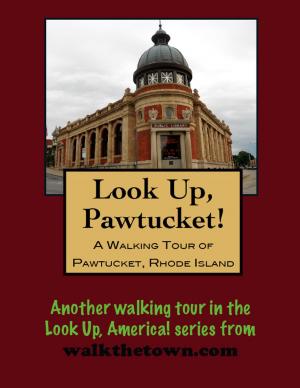Look Up, Knoxville! A Walking Tour of Knoxville, Tennessee
Nonfiction, Travel, United States, South, History, Americas| Author: | Doug Gelbert | ISBN: | 9781465836892 |
| Publisher: | Doug Gelbert | Publication: | September 20, 2011 |
| Imprint: | Smashwords Edition | Language: | English |
| Author: | Doug Gelbert |
| ISBN: | 9781465836892 |
| Publisher: | Doug Gelbert |
| Publication: | September 20, 2011 |
| Imprint: | Smashwords Edition |
| Language: | English |
There is no better way to see America than on foot. And there is no better way to appreciate what you are looking at than with a walking tour. Whether you are preparing for a road trip or just out to look at your own town in a new way, a downloadable walking tour is ready to explore when you are.
Each walking tour describes historical and architectural landmarks and provides pictures to help out when those pesky street addresses are missing. Every tour also includes a quick primer on identifying architectural styles seen on American streets.
James White founded Knoxville in 1786 after he came from North Carolina to the Fork of the River, where the Holston and French Broad Rivers meet to form the Tennessee River. He later moved downriver and settled near First Creek. He built a series of cabins that came to be known as White’s Fort.
After the creation of the Southwest Territory in 1790, the appointed governor, William Blount, selected White’s Fort as the territory’s capital. James White set aside land adjacent to the fort for a new town, named “Knoxville” after Secretary of War Henry Knox. White employed his son-in-law Charles McClung, who had acquired rudimentary knowledge of surveying while in Philadelphia, to draw up lots for the new town, which were sold at auction on October 3, 1791. McClung named the early streets after those he remembered from his time in Philadelphia.
When Tennessee became a state in 1796, Knoxville was the capital but the town never really took off. Population grew slowly and when the state’s capital moved permanently to Middle Tennessee in 1818 the town trundled on as little more than a stopping point for travelers on the Tennessee River. The population was scarcely more than 2,000 by the middle of the 19th century.
Knoxville was just beginning to develop as a railroad and commercial center when the Civil War struck, pitting the town’s secessionists against Unionist in most of East Tennessee, where farms were small and slaves few. The town waffled between Confederate and Federal occupation and took a physical beating in the process. It eventually wound up in Union hands after 1863 which helped springboard the town to prosperity when the war ended.
By 1896 city boosters bragged that only Atlanta and New Orleans handled more trade than Knoxville in the South. Factories were churning out railroad cars, processing pink marble from nearby quarries, assembling furniture, and processing food. There were so many textile factories operating in Knoxville that it called itself “the Underwear Capital of the World.” The population by the middle of the 20th century was 125,000.
But that progress came with a price tag. In 1947 John Gunther, a travel writer known for his breezy observations that often became ingrained as truths, published a bestselling travel guide called Inside U.S.A. in which he blithely declared Knoxville to be the Ugliest City in America. It didn’t help that Time magazine chose to highlight that observation in its review of the book. Gunther’s description was not dismissed by city leaders and one of the first targets for extraction was a century-old marketplace that had once been the heart of the town and that is where we will begin our walking tour...
There is no better way to see America than on foot. And there is no better way to appreciate what you are looking at than with a walking tour. Whether you are preparing for a road trip or just out to look at your own town in a new way, a downloadable walking tour is ready to explore when you are.
Each walking tour describes historical and architectural landmarks and provides pictures to help out when those pesky street addresses are missing. Every tour also includes a quick primer on identifying architectural styles seen on American streets.
James White founded Knoxville in 1786 after he came from North Carolina to the Fork of the River, where the Holston and French Broad Rivers meet to form the Tennessee River. He later moved downriver and settled near First Creek. He built a series of cabins that came to be known as White’s Fort.
After the creation of the Southwest Territory in 1790, the appointed governor, William Blount, selected White’s Fort as the territory’s capital. James White set aside land adjacent to the fort for a new town, named “Knoxville” after Secretary of War Henry Knox. White employed his son-in-law Charles McClung, who had acquired rudimentary knowledge of surveying while in Philadelphia, to draw up lots for the new town, which were sold at auction on October 3, 1791. McClung named the early streets after those he remembered from his time in Philadelphia.
When Tennessee became a state in 1796, Knoxville was the capital but the town never really took off. Population grew slowly and when the state’s capital moved permanently to Middle Tennessee in 1818 the town trundled on as little more than a stopping point for travelers on the Tennessee River. The population was scarcely more than 2,000 by the middle of the 19th century.
Knoxville was just beginning to develop as a railroad and commercial center when the Civil War struck, pitting the town’s secessionists against Unionist in most of East Tennessee, where farms were small and slaves few. The town waffled between Confederate and Federal occupation and took a physical beating in the process. It eventually wound up in Union hands after 1863 which helped springboard the town to prosperity when the war ended.
By 1896 city boosters bragged that only Atlanta and New Orleans handled more trade than Knoxville in the South. Factories were churning out railroad cars, processing pink marble from nearby quarries, assembling furniture, and processing food. There were so many textile factories operating in Knoxville that it called itself “the Underwear Capital of the World.” The population by the middle of the 20th century was 125,000.
But that progress came with a price tag. In 1947 John Gunther, a travel writer known for his breezy observations that often became ingrained as truths, published a bestselling travel guide called Inside U.S.A. in which he blithely declared Knoxville to be the Ugliest City in America. It didn’t help that Time magazine chose to highlight that observation in its review of the book. Gunther’s description was not dismissed by city leaders and one of the first targets for extraction was a century-old marketplace that had once been the heart of the town and that is where we will begin our walking tour...
